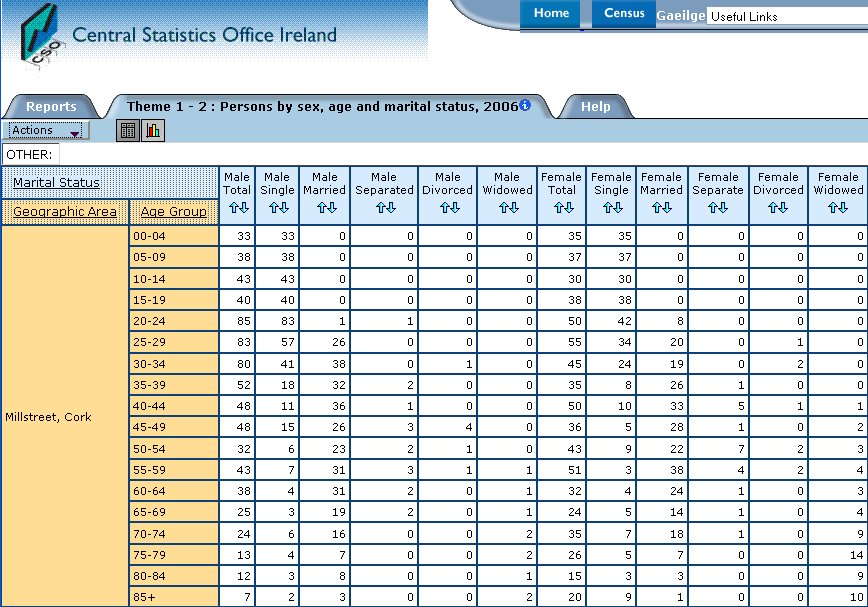
That’s a total of 1,401 people (744 male, and 657 female) just for Millstreet Town itself. Listed below also are the number of people in each of the Local Electoral Divisions that are in the Millstreet catchment area, which gives an idea of how many people live in our general area.
| Male | Female | |
| Coomlogane | 436 | 395 |
| Drishane | 853 | 809 |
| Keale | 161 | 156 |
| Cullen | 204 | 212 |
| Kilcorney | 152 | 163 |
| Crinnaloo | 108 | 92 |
| Rathcoole | 211 | 215 |
| Skagh | 225 | 208 |
| 2350 | 2250 |
See below for more details and some analysis of the census information for Millstreet:
There’s lots of other interesting information in there, more than we can add here but they deal with the following topics:
- Sex age and Marital status
- Migration, Ethnicity and Religion
- Irish Language
- Families
- Private Households
- Housing
- Communal Establishments
- Economic Status
- Social Class and Socio-Economic Group
- Education
- Commuting
- Disability, Carers and Voluntary work
- Occupations
- Industries
- Car and PC Ownership
The best starting point is in the Small Area Population Statistics (SAPS) page. If you just want the information on Millstreet Town, go to the Towns (233) with a population of 1,000 or over, organised alphabetically and click on the topic you want.
There are some glaringly obvious anomalies with the table for Millstreet above:
Note 1: the discrepancy between Men and Women aged 20-40, where the number of men is suddenly much greater than the number of women (see the table below). There are probably two reasons for this:
- The influx of migrant workers during from 2000 to 2006, would have been mainly men in their 20’s and 30s, though quite a number of women arrived also, and
- Industry types in Millstreet is probably more suited towards the male workforce, whereas women tended to stay and work in the cities once college was complete.
Note 2: The drop in births up to 2006. This has been noticed the the schools in the last few years, with the class sizes getting smaller, but in the last few years there has been a bit of a baby boom in Ireland, and Millstreet is no exception. Our resident migrants (20-40) are of child bearing age and are keeping the numbers of class sizes in the primary schools up.
If you notice any other trends in the data, please let us know, so they can be included and discussed.
Unfortunately unlike the 1911 census details that we published three months ago, individual household census details are not available to view, and will probably not be available before we are all fairly long in the tooth.
All details above are from the Central Statistics Office website.
